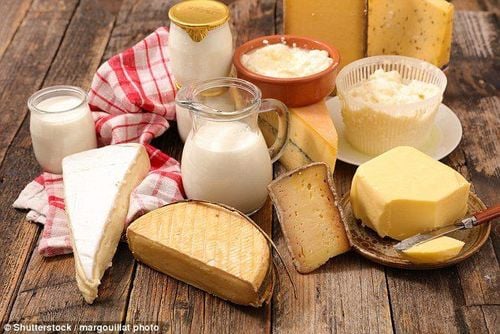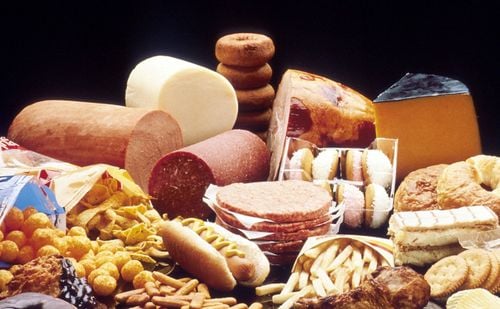This is an automatically translated article.
Fat is an important nutrient, however, consuming too much fat can lead to weight gain and over time this can develop into obesity, increasing the risk of health conditions. strong.
1. Overview of fats in food
Fats are an important part of a healthy balanced diet. We need a small amount of fat in our diet. Fat in food, also known as lipid in food, provides an abundant source of energy and helps the body absorb fat-soluble vitamins such as A, D, E and K. In addition, fat also provides provide us with essential fatty acids. However, consuming too much fat can lead to weight gain and over time this can develop into obesity, increasing the risk of other serious health conditions such as heart disease and diabetes. type 2 diabetes and some cancers. All fats provide the same number of calories, about 9 kcal per gram. This is more calorie than other types of nutrients provide, such as protein and carbohydrates provide only about 4 kcal per gram.
2. Classification of fats in food
Fats are made up of smaller structural units, called fatty acids. Fatty acids can be structured differently in carbon chain length textures, whether they are saturated, monounsaturated or polyunsaturated fats. These differences determine whether they are solid or liquid fats. More importantly, however, differences in chemical structure can also have a distinct impact on our health.
Fats in foods are usually saturated or unsaturated. Most foods usually contain a mixture of the two.
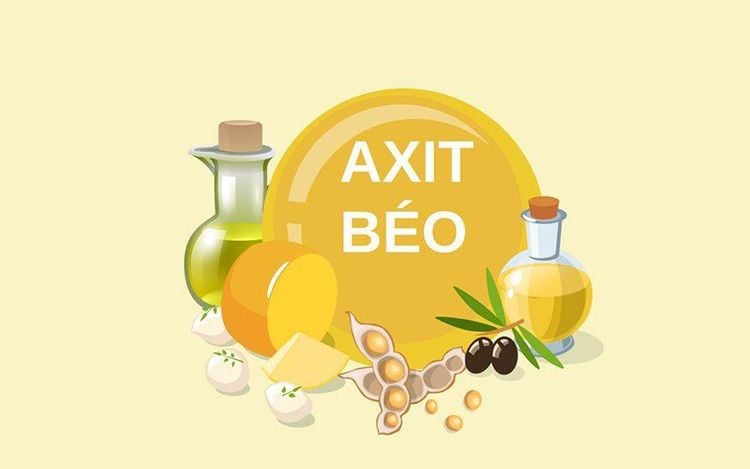
Axit béo có thể tạo ra tác động khác biệt lên sức khỏe của của con người
2.1 Saturated Fat If given a choice, eat only small amounts of foods high in saturated fat. Saturated fat is commonly found in the following foods: Fatty meats and processed meat products such as bacon, hot dogs, cream cheese, sour cream, buffalo butter, lard, coconut oil and oils palm, coconut milk and cream, cakes, cookies, pies, sausage rolls and Chocolate croissants.
Saturated fat can increase the amount of LDL-cholesterol in the blood. LDL-cholesterol is often referred to as 'bad' cholesterol. Too much LDL-cholesterol in the blood can cause fatty deposits in the walls of blood vessels and narrowing of the lumen. This increases the risk of blood clots forming, which can lead to a heart attack or stroke. Meanwhile, 'good' cholesterol (HDL-cholesterol) carries LDL-cholesterol to the liver to be broken down, limiting its accumulation in the blood.
2.2 Unsaturated fats Unsaturated fats help maintain blood cholesterol at a healthy level. For a healthy, balanced diet, it's best to choose foods that are higher in unsaturated fat and lower in saturated fat.
There are 2 types of unsaturated fats: Monounsaturated fats and polyunsaturated fats. Monounsaturated fats are found in some vegetable oils such as olive and canola oils, avocados, and nuts. These foods, which are often found in a typical Mediterranean diet, have been linked to good heart health and a low risk of heart disease.
Monounsaturated fats help maintain good HDL cholesterol levels and reduce bad LDL-cholesterol levels. Polyunsaturated fats are found in some vegetable oils such as corn oil, sesame oil, sunflower seed oil, walnuts, pine nuts, fish oils (e.g. mackerel, salmon and sardines). Polyunsaturated fats help lower LDL-cholesterol and provide us with essential fatty acids that the body cannot make on its own, such as omega-3 and omega-6.
Omega-3 fats are also important during pregnancy and lactation to support baby's development. Omega-3 fatty acids are mainly found in fish such as mackerel, salmon, sardines, and herring. The human body can also get omega-3s from plant-based foods, but they are not thought to be as beneficial for heart health as fats from animal sources like fish oil.
If you don't eat fish, good sources of omega-3 for vegetarians include: some vegetable oils, canola oil, flaxseed, soybeans, tofu, and walnuts. Additionally, certain foods are sometimes fortified with omega-3s, such as omega-3 fortified eggs. Read the information on nutrient content carefully to know how to choose the right fats in foods.
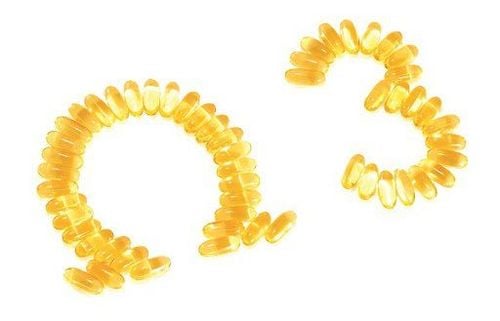
Chất béo omega-3 cũng rất quan trọng trong thai kỳ
3. Fat and Health
Several headlines in the media have suggested that saturated fat may not have much to do with heart disease. This can be very confusing because saturated fat has long been seen as potentially harmful to health. Therefore, it is important to keep in mind that these titles are inconsistent with current scientific understanding and there is insufficient medical evidence to support them.
Reliable guidelines for a reasonable diet are usually published after reviewing all relevant evidence available at the time. Studies have shown that the type of saturated fat found in foods increases LDL-cholesterol levels. Increasing LDL-cholesterol is directly associated with an increased risk of heart disease, and lowering LDL-cholesterol reduces heart disease and mortality. There is also evidence that replacing saturated fat with unsaturated fat in the diet lowers blood cholesterol and reduces the risk of heart disease and stroke. However, replacing saturated fat with refined carbohydrates like sugar can have adverse health effects.
Saturated fat is only one part of the overall diet and we need to pay attention to other foods in the diet like whole grains, fruits and vegetables. The risk of heart disease also depends on other habits and lifestyles such as smoking, alcohol consumption and physical activity. Therefore, overall diet combined with lifestyle is important.
How does cholesterol contained in food affect health? In the past, it was thought that eating foods containing cholesterol (eg, eggs, liver, kidney and shellfish such as shrimp and crab) was the main source of cholesterol for the body. However, it is the saturated fat content of the diet that is more influential on blood cholesterol levels. Therefore, it is not necessary to avoid or minimize cholesterol-rich foods unless advised by a healthcare professional because of comorbidities.
4. Are trans fats bad for health?
Like saturated fats, trans fats have been shown to increase blood LDL-cholesterol levels, and research has shown a strong link between trans fats and cardiovascular disease.
There are 2 types of trans fats: natural trans fats found in low levels in meat and dairy products, and artificial trans fats labeled as fats or hydrogenated oils in a number of processed foods. Concern about how consuming a lot of trans fats affects health has led to changes in the way food is produced in recent years, and the good news is that good advances have been made. remove these fats from our food chain.
Trans fats can also be created when vegetable oils are heated and reheated to fry foods at very high temperatures and this is one reason why fast food can sometimes be high in trans fats chemical. Trans fats are also found naturally in small amounts in meat and dairy products and are the main source of trans fats in people's diets. However, recommendations for reducing dietary trans fats often refer to industrial trans fats, since foods that naturally contain trans fats, such as milk, are a good source of these nutrients. nutrients and in current amounts, this natural trans fat may be less harmful to health than those manufactured for the food industry.
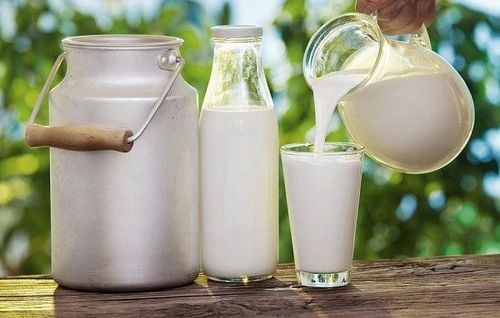
Thực phẩm có chứa chất béo chuyển hóa tự nhiên như sữa có thể ít gây hại cho sức khỏe
5. How much fat should we have per day?
The Department of Health recommends that total fat should not exceed 35% of our total daily energy (calories) from food and saturated fat should not exceed 11% of total energy intake from food . People who are overweight or obese may also need to think about reducing their total fat intake, as well as saturated fat, to help them lose weight and avoid further weight gain.
6. Choosing a reasonable fat in food
6.1 How can we make better choices about the fats we eat? According to statistics in the general population, the total fat intake of each person is close to the recommended daily level, but the amount of saturated fat consumed is too high. On average, we need to cut back on the amount of saturated fat we consume and choose healthy foods that contain unsaturated fats instead.
6.2 How do I know how much saturated fat I am eating? Following healthy eating patterns, such as the one based on the Eatwell Guide, when choosing unsaturated oils and eating only small amounts of saturated fat, will help you eat less saturated fat in his diet. Sometimes it can be unclear how much saturated fat we are eating or how much of a particular food is in our daily intake. Food labeling can provide us with a useful tool to help determine how much food or drink will contribute to our total daily fat and saturated fat intake.
The information on the packaging can be a useful and easy source of information to make food choices more rational. Labels can color-code nutrients depending on whether the fat content is low (blue), medium (amber), or high (red). At that time, priority should be given to foods with blue and amber colors.
Please dial HOTLINE for more information or register for an appointment HERE. Download MyVinmec app to make appointments faster and to manage your bookings easily.
Reference source: .nutrition.org.uk






